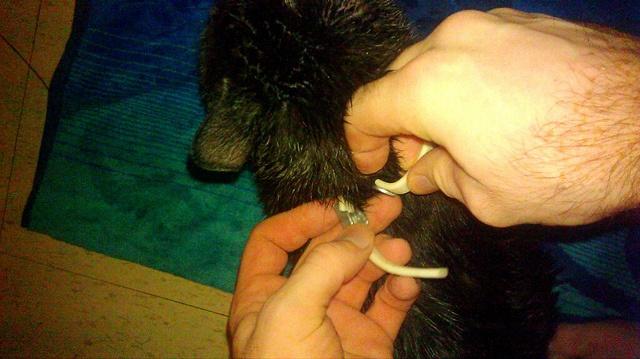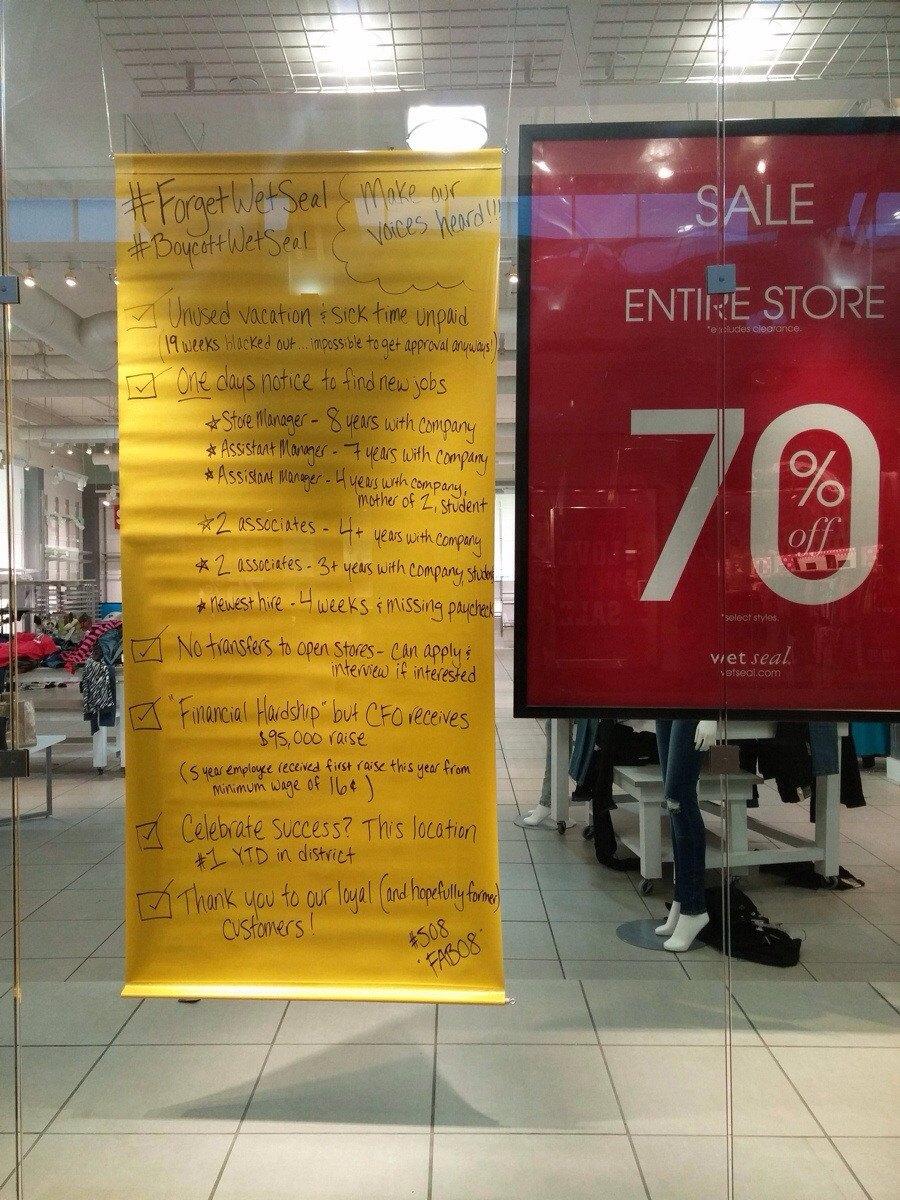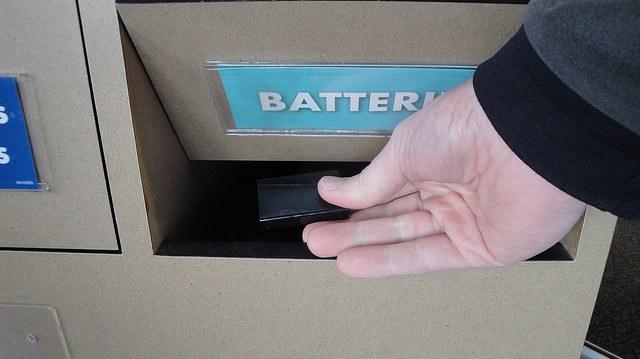Oil Spill in Singapore Strait Puts Endangered Turtles at Risk


Oil spill response companies are rushing to clean up a large oil spill in the Singapore Strait, off the coast of Indonesia, in the hope of stopping the oil slick before it reaches protected turtle nesting areas on Bintan Island, Indonesia.
On Jan. 2, an estimated 4,500 tons (or 33,000 barrels) of crude oil were spilled when the Libyan oil tanker Alyarmouk and a Singaporean cargo ship, Sinar Kapuas, collided approximately 11 nautical miles from the territorially-disputed shoreline of Pedra Branca, Indonesia, northeast of Singapore.
The accident has been classified as a major spill -- and one of the largest to have hit the area in years. The Maritime and Port Authority of Singapore (MPAS) said that satellite images taken over the last few days did not find any evidence that the oil spill had reached the resort beaches of Bintan Island (which is also home to several rare species of turtles), but the agency has not ruled out the possibility that it would make landfall this weekend.
Bintan is known for its white sandy beaches and is considered a major tourist destination for eco tours. Resorts on the island have established protected areas for several species of sea turtles, all of which are considered endangered. Tours organized through the Eco-Tourism Venture Project and promoted by the island’s resorts help educate visitors about traditional communities on the island, as well as environmental concerns.
According to PT Bintan Resort Cakrawala, a subsidiary of Gallant Venture Ltd, the tourism also contributes to funding that goes back into the community through financial assistance, education and other community initiatives. The island is home to nesting areas for some of the world’s rarest turtles, including the hawksbill turtle and green turtle.
Two marine services companies began cleaning up the oil on Jan. 3, using dispersants, oil booms and skimmers to reduce the spread of the oil slick. Increased storm activity in and around the Singapore Strait is expected this weekend, which may interfere with cleanup and containment efforts.
MPAS oversees shipping traffic in the strait and has established contingency plans for oil spills. Still, records show that there have been more than 43 significant spills of 39 tons or more in the Strait since the 1960s. MPAS classifies spills greater than 70 tons as “major” events. In the last year, there have been at lease four events that have resulted in spillage of oil or other contaminants off the coast of Indonesia’s islands.
Image of Bintan Island: Robert Lowe
Image of Singapore Strait: Jnzl's Public Domain Photos
Bipartisan Group Of Senators Pushes For Distributed Wind


Editor's Note: This post was originally published on CleanTechnica.
By Nick Blitterswyk
A group of Senators recently urged the U.S. Department of Energy to continue funding programs for the domestic distributed wind energy industry.
The bipartisan group, led by Sen. Al Franken (D-Minn.), wrote a letter highlighting the clear potential for distributed wind power to “contribute many gigawatts of electricity similar to other renewable technologies.”
Reactions have been mixed, and that’s understandable. The distributed wind industry has faced a good deal of critique (some of which is warranted). Nevertheless, the senators are correct: Distributed wind is a useful technology, with useful applications, and it stands to benefit from the increasingly attractive economic conditions for distributed generation.
Choppy beginnings
When distributed energy took off over the last five years, small wind got caught flat-footed. The reason was primarily because it hadn’t reached a level of maturity where it could take advantage of the changing tide. As a result, there were several cases of companies manipulating incentives and hawking shoddy products on unsuspecting customers (and lest this become an anti-China argument, virtually all such products came from U.S. and European companies). One of the better known examples was DyoCore, which made lofty claims about the power of its SolAir turbine in order to game California’s Emerging Renewables Program. California actually received so many complaints about the company that it cancelled the entire program.
Early failures like these were possible because standards and certifications hadn’t yet been established in the distributed wind industry. And though the DyoCores of the world eventually failed, these early companies and their stories damaged the reputation of even the best small wind products on the market, greatly holding back the industry.
2011 was when the wind started to come out of the industry’s sails (and yes, pun intended). The economy had tanked, and solar prices were gaining economies of scale, making small wind expensive by comparison in a market where customers were holding their wallets more tightly. But, just like with solar, distributed wind has continued to evolve and innovate. The technology and business models have continued to advance, the industry has consolidated, and as the senators noted in their letter, the distributed wind power industry is at the threshold of rapid commercialization.
The future of small wind: Worth investing in
Economic conditions are increasingly attractive for all distributed generation. In just a few short years, distributed wind has changed dramatically. There are fewer players, and the standards are much tougher as the Small Wind Certification Council in the U.S., and comparable certification programs around the world, have reached maturation. The technology has advanced — and has a wide variety of applications. You’re not going to find distributed wind atop 20 percent of rooftops, like you will already with solar panels in Australia. But you will find that the modern technologies from the companies that remain in the industry — the strongest, best-run ones with the best technology, and with better economies of scale — will start gaining a resurgence.
Distributed wind has particularly great potential in applications such as:
- Farms: A 10-kilowatt or larger turbine can be installed in windy locations and produce energy at a rate less than that available from the grid, or in farms in remote regions with difficulty accessing the grid.
- Northern and Southern regions, from Scandinavia to Patagonia: There are limitations to solar resources during the winter months at the poles, but wind is a great resource in most of these areas.
- Hybrid installations: Particularly in off-grid situations, a mix of energy sources adds resiliency and lowers the cost of energy.
This list also doesn’t include the many forward-thinking businesses and consumers who want to support and benefit from the technological advancements in the industry, and who have also been a key customer base for distributed wind turbines. Many of these projects, from Lincoln Financial Field in Philadelphia to Whole Foods in Brooklyn, inspire greater interest in sustainability and emerging technologies that shouldn’t be overlooked.
The importance of investment
The small wind industry began its life far too dependent on incentives and government funding. But limiting or eliminating development of the industry would be a huge mistake. R&D has developed the technology significantly in the past several years, and with certifications and standards in place, as well as new business models that remove financial barriers and mitigate performance risks, there are additional efficiencies to explore. The U.S. has a strong advantage in the field, and the DOE’s support will be essential for distributed wind to “cross the chasm” and find its footing amidst Cleantech 2.0 — an era with much promise for new business models and advanced distributed generation. A group of senators understands this — I hope the rest of the industry will follow suit.
Nick Blitterswyk is the CEO and founder of UGE International, a leading developer of distributed renewable energy solutions for business and government, with projects in over 90 countries, including several for Fortune 1,000 companies.
NRDC Files Lawsuit Over Toxic Pesticide Used In Pet Flea Control Products


When we put flea control products on our pets, we want to kill the fleas on our four-legged friends -- not expose ourselves to toxic pesticides. That’s why the Natural Resources Defense Council (NRDC) filed a lawsuit this week against the Environmental Protection Agency.
Filed in federal court, the lawsuit challenges the EPA’s decision to allow the pesticide tetrachlorvinphos (TCVP) to be used in pet flea control products. The lawsuit petitions the court to “review and set aside the final order of the U.S. Environmental Protection Agency denying NRDC’s request to cancel all pet uses of the pesticide tetrachlorvinphos.”
NRDC has long been concerned about the pesticide. The organization conducted a study in 2007/2008 that found the levels of TCVP residues on the fur of pets wearing flea collars to be unsafe for toddlers. In 2009, NRDC filed a formal petition with the EPA asking the federal agency to not allow TCVP to be used in pet products. NRDC didn’t receive any information about the status of its petition. In February 2014, the organization filed a lawsuit that requested a mandate that the EPA respond to its petition. In May 2014, the EPA promised to respond by the end of October, and in November the federal agency published a safety assessment that, according to the NRDC, “ignores the science and fails to account for the increased vulnerability of kids.”
“Over five years have passed since we first urged EPA to get these toxic chemical collars off the market for good, but the agency continues to fall back on faulty assessments that don’t reflect the true vulnerability of children,” said Miriam Rotkin-Ellman, senior scientist for NRDC, in a statement. “Science shows, time and again, that brain- and nervous system-damaging chemicals like TCVP are too harmful to have in our homes, on our pets and around our children."
An NRDC study, published in 2009, found that high levels of pesticide residue stay on a cat’s or dog’s fur for weeks after a flea collar is put on the pet. And residue levels found on some pets' fur posed neurological risks that are 1,000 times higher than the EPA’s acceptable levels. Children are more vulnerable to toxic pesticides as their metabolic systems are developing. Children also might put their hands in their mouths after touching a cat or dog, so are more likely than adults to ingest pesticide residues.
However, both children and adults are at risk from TCVP residue, according to NRDC. The 2009 study found that residues of TCVP were “high enough to pose a risk to both children and adults who play with their pets.”
Image credit: Christina Welsh
Electronics industry reinforces commitment to tackling forced labour


The Electronic Industry Citizenship Coalition (EICC) is to conduct shadow audits and increase its industry and government engagement in Malaysia to further combat the issue of forced labour.
The nonprofit coalition of leading electronics companies dedicated to supply chain responsibility has been working for more than a decade to support the rights and wellbeing of workers and communities worldwide affected by the global electronics supply chain. While the EICC Code of Conduct explicitly bans trafficked and forced labour, completely eradicating it in the global electronics industry supply chain remains a challenge for everyone – including EICC members.
Some of the ongoing challenges faced by government and industry in trying to protect workers were highlighted recently by international nonprofit Verité in a new report on forced labour among foreign migrant workers in Malaysia’s electronics industry. The EICC has since published a position paper that outlines how it has been proactively working to address these issues and next steps. See here.
“We are continuing to evolve our approach as an industry to better protect these workers, including taking steps to strengthen our Code of Conduct and audit requirements as well as engage government and civil society groups to evaluate and address structural challenges in the systems of recruitment and management for these workers,” said Rob Lederer, executive director, EICC.
The Quick & Dirty: 9 Distractions We Can All Do Without in 2015


I know you are going to be flooded and fooled by a million pieces of cool new trends for 2015. Yawn ... How about trends we want to see the end of in 2015? Here are the few I would really like to wave goodbye to this year.
1. The circular distraction
Can we stop making up new jargon for old and tested ideas? Just because some hipster and cooler-than-us-old-skool-sustainability-nerds kid comes up with a fancy new name doesn't mean it is actually a new idea. A few years ago it was "shared value" that got under my skin - packaging what we've been doing for a while into a brand new box. Now everyone is on about the circular economy ... Really? Nice that the rest of the world is catching up with what has been at the forefront of sustainability thinking since John Elkington and others opened Pandora's sustainability box. It's not new. Just a shiny new name but really a circular distraction.
2. "Everything is sustainable"
No it isn't. Sustainability is a simple concept of making sure the impact we have today does not impact the ability of future generations to enjoy living on this earth and using those same resources. Simple, right? Then how can tobacco companies call what they do sustainability? They know what the end product does actually kills future generations of potential users. That's the easy one. Same goes for companies dependent on fossil fuels for their existence. You take stuff from the ground and then use it in a way that doesn't make it possible to use it again. Yeah, that's not sustainable. You can be a responsible company, but your main product is not sustainable.
Let's not confuse the issues, and let's call it what it is. A hat is a hat. A dog is a dog. Sustainability is sustainability. CSR is CSR. Stick with the accepted definitions. Leave it to politicians to redefine language each election cycle.
3. Disruption is not innovative
Maybe all of this comes down to the words we use. But if I have to hear someone wanting to be 'disruptive' or 'innovative' again and then the actual experience is bland and boring ... Please stop it. Tesla was disruptive and innovative. The iPhone was disruptive and innovative. To be disruptive and innovative you have to disrupt and innovate -- not copy and repeat whatever everyone else did. Please note I said Tesla and the iPhone WERE disruptive and innovative. Not anymore. Now they’re old news. Still good news but old news nonetheless. Stay edgy. Do the unexpected. Fail often. But don't rinse and repeat thinking that was disruptive. And BE it. You don't walk into a party and say, "I am the heart and soul of the party." People will quickly know you aren't. You simply party hard and let people see and experience you -- by engaging with you. Marketing, old school PR, advertising, etc. – boring. Not innovative and not disruptive. What is? Well, you know where to get in touch with me.
4. The pitch
The press release is dead. Do it, but it is simply not worth much today when it comes to developing relations with the public. A press release is a message pushed by you and not a point of engagement. It is boring. And while we are on the media: Stop counting media impressions and think that is engagement. It isn't. It was just what was in the media. When did you last use that personally to engage with someone? Start engaging and measure real impact. Not just your words.
5. Intangible goals
Sustainability goals are available today for a dime a dozen. Having a clear path of how you are going to get there though is a different story! Set some big, hairy, audacious goals instead of "reducing emissions by 20 percent by 2020" or "reducing water use by 40 percent by 2040." Those are peanuts and, beyond the kitschy appeal of your wordsmithing, will have limited impact in a world where emissions will choke us before you reach your goal.
So, why not make them really challenging and be clear about the path you will follow to get there? And call us sustainability geeks for help if you don't know how to do either of those. We are happy to help. Just tweet using #sustainability if you don't know how to find any of us. And the same goes for using GRI -- stop using it to say you used it. Use it to guide your actions or don't use it at all. It makes you look silly.
6. Silly awards and rankings
Just stop it with telling me about all those awards and rankings you placed on. Most of them don’t make sense, and your consumer couldn't care less. Look around at the other companies on the list. Why did they make the list? Yeah, "what the *#$&?" is the correct reaction. I can't believe they made the list either. And please don't send a press release telling us about your awesome award. And expecting it to result in a valid news story.
7. Softballs and leadership
Leadership means taking on the toughest of issues and not picking the issues on which you can have no impact. Like education ... Nice issue because you can't really solve it yet no one can disagree with your focus. Pick issues that you can impact and change -- measurably.
So, if you are a tech company making hardware but focusing on education, please sort out your sourcing pipeline for conflict minerals first and stop people from jumping off of buildings because of over work. If you could solve that issue, that would be a step forward for education.
8. Huddling
Leaders lead, they don't huddle. Stop thinking that every company that is registered as a business is your friend or just a competitor. Some companies and their leaders are actively promoting and/or creating a world that will make it impossible for your business to exist. For example, climate change threatens some of the crops that we love like coffee, cocoa, etc. Companies that do not act to stop or slow down climate change are your enemies. Their actions are a direct threat to your business. Do not be friends with them. Don't share platforms with them. Stop hanging out in the same associations as them. It makes you look weak when you huddle with those who support your idea of a tax break but are directly involved in killing your business as well.
Leaders lead from the front. Leaders speak out loudly against those who threaten them and those they care for. Leaders don't huddle. Stop huddling. Decide if you truly want to lead and if you want your business to be here in 20 and 30 year from now. If yes to the above, then lead.
9. It is NOT "in your DNA"
I have a new set of [three] rules when I start talking to any company about sustainability. I don’t want to ever read or hear about these: "It's in our DNA," "we're on a journey" and "our employees are our greatest asset." Puh-leaze. Stop. It. Sustainability is not in your DNA, making money is. Everyone is on a journey. And I hope you haven't fired or "downscaled" in the last five years because you just got rid of the crown jewels -- your employees.
Moreover, these statements also tell me absolutely nothing about you and what makes you unique. In fact, they show that you have no clue about what you should do or say or even your perspective on sustainability. And that means it is not in your DNA.
10. "______": Fill in the gap yourself. Stop trying to make every list a nice round number. Sometimes you should just stop when you have nothing more to say.
So, there you have it. The list of things I hope we won't see again in 2015. But I bet you we will because it is in your DNA...
Image credit: Flickr/marfis75
A special thanks to all my colleagues and friends - Aman, Josh, Elise, Mark, Erica, Charity, Veronica, Kriti and Peter for their ideas in creating this anti-wish list for 2015.
A series of quick & dirty opinion pieces by Henk Campher. Senior Vice President, Business + Social Purpose and Managing Director of Sustainability at Edelman (www.edelman.com) out in the Wild West of San Francisco. Disrupter of purpose. Engineer of big ideas. Slayer of myths. Social media junkie – @angryafrican. He never wears ties. Ever. But always wears an accent with a strategy and opinion in his back pocket. Please note this series will not focus on individual companies and any reference is purely to provide color commentary. His new book, Creating a Sustainable Brand is available here.
Follow Henk Campher on Twitter.
Conditions at Wet Seal Stores Leave Employees Feeling Clubbed


It is not easy being a mall these days, nor is it easy being a mall store. And it certainly is not easy being a mall store employee with the low pay and lack of benefits that are trademarks of working in retail. Wet Seal, once a symbol of “mall rat” culture, is the latest clothing company to struggle with a shift in consumer shopping trends.
Unfortunately, like other struggling retail chains, Wet Seal is not managing its demise with much grace. After a long court battle, the tween and young women’s clothing company settled a multimillion dollar lawsuit alleging it discriminated against black employees for not fitting the company’s “brand image.” California employees also sued the company over policies such as being forced to purchase Wet Seal clothes and not being reimbursed for travel between locations.
Then there are the mounting financial problems: Wet Seal has lost over $150 million in the past two years, and it recently defaulted on a private placement deal to the tune of $28 million. As the company prepares to close as many as 60 stores by the end of the month, its CFO scored a $95,000 raise.
Many Wet Seal employees, however, will not get a raise -- but layoffs and pink slips instead. And the anger is summed up best at a Seattle mall, where employees put up a sign airing their grievances. Among the many reasons why employees are angry include unpaid vacation and sick time; a one-day notice that their jobs were disappearing (pretty typical in most sectors, sadly); no offers to transfer to another store; and long job histories marked by almost no wage increases.
Companies bleeding money often take the most desperate of tactics, and this is true of Wet Seal. Unfortunately, receiving a notice that advises “of a decision that will affect you” (did someone really learn this in human resources school?) -- with the order to destroy it once read -- comes across as heartless. Employees and their allies are responding in kind with a fury on social media. Hashtags including #ForgetWetSeal, #BoycottWetSeal and the pointed but disturbing #ClubWetSeal are making the rounds on Twitter. Meanwhile more signs are appearing in Wet Seal storefronts, causing the California-based chain more PR headaches, though it is unlikely the company will change its approach towards its employees anytime soon.
The result is another chain joining the likes of Walmart, Sears and Radio Shack in retail purgatory and writing another sad chapter about the burdens confronting the American worker.
Image credit: Imgur
Based in California, Leon Kaye has also been featured in The Guardian, Clean Technica, Sustainable Brands, Earth911, Inhabitat, Architect Magazine and Wired.com. He shares his thoughts on his own site, GreenGoPost.com.
Sustainable Packaging Trends for 2015: All About Millennials


By Elisabeth Comere
As packaging innovators, it is in our best interest and in the interest of our customers to monitor emerging trends in the industry.
I compiled three distinct ways packaging could evolve in the coming year which have been primarily influenced by millennials, the largest generational group of socially-aware consumers globally.
1. Reaching millennials
Millennials, generally aged between 15 to 35, make up about a third of the global population, and they are significantly influencing market trends. This purpose-driven group uses its power to drive social and environmental change across economic sectors by demanding accountability from major corporations and big brand names. They are also the largest generational group in history and, on average, they spend approximately $600 billion annually. Results show that total is expected to rise to $1.4 trillion in the next six years.
Research released by brand marketing firm Oliver Russell indicates their purchasing choices are influenced by companies that exercise positive social and environmental best practices across the entire supply chain. “Millennials view taking care of themselves and the environment as one and the same,” wrote the authors of the Oliver Russell Brand Amplitude Study.
With on-the-go lifestyles, this generation is looking for healthy and convenient food and beverages that come in packages that are easily opened, resealed for later use, and feature recyclability and other green qualities. In fact, 3 out of 4 millennials would choose soup from a carton over a can for just these reasons. Healthy and eco-friendly products are dominating the purchases in this market, but millennials also look for transparent information about a product’s sustainability credentials, with claims supported by third parties.
2. Transparent recycling chains
According to a global study commissioned by Tetra Pak, 89 percent of consumers prefer to buy products in packages they know to be recyclable. But according to a recent ISRI study, 33 percent of Americans have doubts about recycling, as they are not always certain if an item is recyclable, and 6 percent say they do not believe the items they set aside for recycling are actually recycled. (This survey was conducted online within the United States by Harris Poll on behalf of the Institute of Scrap Recycling Industries (ISRI) from Nov. 3-5, 2014 among 2,013 adults ages 18 and older.)
For this reason, we need to establish better transparency within our recycling chains in order to communicate the goals, challenges and accomplishments of existing recycling programs. One way to alleviate confusion and skepticism is to incorporate the transparent reporting structures that measure the efficiency and effectiveness of recycled materials and disclose the chain of custody of how these materials are recycled. This is in addition to clearly labeling products so consumers can easily identify how to properly recycle them.
3. Move from "clean" to "clear" labels
“Clean" labels refer to a branding approach that emphasizes a product’s wholesomeness of ingredients, lack of artificial ingredients and sometimes a lack of common allergens. “Clean labeling” relies on the use of terms such as “natural," “organic" and “minimally processed." The lack of universally-accepted definitions around these terms, however, has led to growing skepticism and confusion in the marketplace. In reaction to this, consumers and consumer advocate groups are pushing for more clarity in labeling, hence better transparency about the product and packaging composition. A recent study by Innova Market Insights found that clear product labeling is the top trend to likely impact the global food and beverage industry in the new year.
The importance of adhering to the clear labeling approach holds equally true for packaging manufacturers. In a survey of 6,600 consumers in 10 countries, conducted by Euromonitor for Tetra Pak, almost half of the respondents said they find on-pack logos helpful in understanding the environmental impact of beverage packages. One example by which Tetra Pak is leading in this field is by displaying FSC labeling on more and more of its packages made of FSC-certified materials, thus providing consumers with a third-party assurance that the paperboard used to make cartons comes from responsibly managed forests and other controlled sources.
Stay tuned for three more packaging trends tomorrow on TriplePundit!
Elisabeth Comere is responsible for environment at Tetra Pak – the world leader in packaging and food processing solutions. She joined the company in 2006 as Environment Manager for Europe where she helped define and drive Tetra Pak’s environmental strategy and contributed shaping recycling for cartons in Europe. Since 2010, she is based in the U.S., focusing on advancing the Tetra Pak’s commitment to sustainability in the U.S. and Canada and is involved in various industry and customer packaging and sustainability initiatives.
California Governor Calls for 50 Percent Renewables By 2030


On Monday, California Gov. Jerry Brown gave the inaugural address for his fourth gubernatorial term. During the address he praised California’s progress during the last 40 years. He also used the speech to call for new environmental targets -- most notably increasing the state’s electricity from renewable sources to 50 percent by 2030.
California first established a renewables portfolio standard (RPS) in 2002, accelerated it in 2006 and expanded it in 2011. Under the current law, all utilities and electricity providers must source 33 percent of their energy from renewable sources by 2020.
As Brown pointed out, California is a leader in renewable energy with the “most far-reaching environmental laws of any state and the most integrated policy to deal with climate change of any political jurisdiction in the Western Hemisphere.” Since the state is “on track” to meet its 2020 goal, it’s time for new challenges, including increasing the RPS because, as Brown put it, “These efforts, impressive though they are, are not enough.”
In addition to increasing the RPS, Brown proposed two other 2030 goals: reducing the petroleum used in cars and trucks by up to 50 percent, and doubling the efficiency of existing buildings and making heating fuels cleaner.
Brown envisions California enacting a “wide range of initiatives.” Those initiatives would include “more distributed power, expanded rooftop solar, micro-grids, an energy imbalance market, battery storage, the full integration of information technology and electrical distribution and millions of electric and low-carbon vehicles.” Launching those initiatives will require “active collaboration at every stage with our scientists, engineers, entrepreneurs, businesses and officials at all levels."
“We are at a crossroads … The challenge is to build for the future, not steal from it, to live within our means, and to keep California ever golden and creative,” Brown said.
Since California first created its RPS program in 2002, almost 200 new renewable energy projects have been built in the Golden State, according to the Union of Concerned Scientists. Nearly three-quarters of those projects were built in counties with unemployment rates of 10 percent or higher.
Currently, the state is producing enough energy from renewable sources to power over 5 million homes, and that is expected to almost double by 2020. California also has the biggest market for solar photovoltaics (PV) in the U.S., according to a report released in released in September by the American Council On Renewable Energy (ACORE). The state accounted for 57 percent of the country’s capacity additions. On June 1, 2014, California broke the state record for utility-delivered solar electricity fed into the state’s grid.
Wind generation has also increased in the state. In 2013, wind generated more electricity in California than geothermal.
Image credit: Powerhouse Museum
The Tyranny of Distance: Reconciling Extended Producer Responsibility with Global Transportation


By Nick Hvozda
Product take-back, a form of extended producer responsibility (EPR), is an important way to implement more sustainable practices. Whether driven by the business case, ethics or legislation, product take-back promotes the practice of recycling, lifecycle assessment and design for durable reuse in secondary markets. It's also a key component of a circular economy.
Today in the U.S., there are 84 EPR laws covering 12 product categories. As the movement toward product stewardship and closed-loop processes continues to grow, more producers will choose (or be forced) to implement product take-back programs. The growth of reverse logistics from EPR will open opportunities for sustainable businesses to capitalize on the trend. But as this happens, it will be key to consider transport costs, both economic ($) and environmental (CO2).
Imagine a pure scenario: Item X is produced at point A and is transported to point B for sale and use. The original manufacturer is compelled by law to recover Item X at the product’s useful end-of-life to recycle the non-renewable and manmade materials within. For this to happen Item X must make the round trip from Point B back to Point A.
In this scenario, successful product take-back means two times the distance traveled, two times the freight cost, the CO2 emissions, the packaging and the effort. Often it also requires incentivizing the end user to return the product. The energy required for this mechanical work (four times distance) cannot be avoided, and it may make the practice prohibitive. Even if the cost is transferred to the customer in the purchase price, the emissions and carbon cost of the return trip remain. In the global economy, the distance between A and B could be 10,000+ miles.
Of course, these interactions do not happen in a vacuum. There are many ways to recycle and reuse the industrial nutrients in the vicinity of Point B, introducing them to the local industrial or natural ecosystem. The majority of high volume, low cost items can be handled this way.
But many products cannot be easily deconstructed into component elements and sold. Let’s say that the original manufacturer takes Item X back because: 1) Item X contains high-value materials; 2) proprietary knowledge limits the ability of a general recycling facility to maximize the recycled value; and 3) it is cheaper to disassemble Item X and reuse certain specialized and durable machined components than to source and manufacture new components. Item X must then return to the point of origin. How does the manufacturer get Item X from Point B to Point A efficiently?
Networks can help. One option is to create a network that can collect and return Item X to Point A in a bulk shipment — gaining efficiency from volume. Another option is to create a network of employees or contractors, trained in the proper disassembly of the product. For a large multi-national company, these options are feasible. For a small company with a global reach, they are impossible.
A small business can partner among its industry to develop global systems of recovery. The Rechargeable Battery Recycling Corp. (RBRC) is an industry-funded recycling system has collected more than 100 million pounds of batteries over its 20-year existence. Creative partnerships along the entire chain of product life assist in reducing travel distance through collaboration. Internet communication networks between suppliers, manufacturers, retailers and end users, used effectively, create efficiencies and opportunities that were previously unavailable. The Product Stewardship Institute (PSI) is a national, non-profit organization with the mission of promoting EPR practices and legislation. It initiates multi-stakeholder dialogues around various industries to assist the development of networks.
In the reverse logistics of product take-back, time is not a critical factor. A reverse of the aphorism “time is money” holds true: price decreases with decreasing urgency. Manufacturers should utilize space-available shipping programs, such as the Fed-Ex TLX option, to reduce freight charges. By partnering with manufacturers, the global logistics industry can maximize previously unused cargo space and generate revenue. Additionally, without time constraints, manufacturers can opt for more efficient modes of transportation: rail instead of truck, ship instead of air.
With take-back in mind, producers can design packaging, as well as products, to be reused. This will not only reduce the need for two sets of packaging (forward and reverse), but will reduce the cost of packaging forward-moving products below previous levels by reducing the need for disposable packaging materials.
Product take-back will only grow as resource constraints tighten. It’s time for products to learn to travel with a round-trip ticket.
Image credit: Flickr/davedugdale
Nick Hvozda is a postgraduate student pursuing his MBA in Sustainable Management at Bard College.
Women failing to aim for top City firms


New data on City bonuses from salary benchmarking site, Emoulment.com, shows that women are not aiming for employment at top firms at the outset of their careers.
Fresh out of university, the data shows a 20% salary gap between men and women and attributes the gap to the fact that a higher proportion of men tend to work for top tier institutions such as Bain and McKinsey, thereby earning more from the start of their career.
Thomas Drewry, ceo at Emolument.com said: "It is significant that from the outset of their career, women do not aim for the top firms, unlike their male counterparts. If they did so more consistently, it would be very interesting to see just how much more they can earn when they reach Senior Manager levels."
Another new report out today from Vlerick Business School’s Executive Remuneration Research Centre shows that top German companies have caught up with top companies in the UK when it comes to executive pay levels.
The report found that, for companies with assets over €5bn, the best paid ceos are found in Germany with a median total compensation of €3.438.000, just eclipsing the UK at €3.401.000.
However, the best paid ceos across the two categories covering businesses with assets under €5bn are still found in the UK.
The study looked at 512 listed companies in the UK, Germany, France, Belgium and The Netherlands - with specific attention paid to pay developments over the last three years particularly with regard to retirement benefits and variable remuneration.
Across the five countries studied, approximately half (49%) did not grant a ceo pay rise, or even reduced total remuneration, in the last three years. Chief execs in the UK were treated most severely, 61% of them did not receive a raise. Germany, on the other hand, was the most flexible; seven out of ten ceos there were given a raise.
Picture credit: Picture credit: © Fabian19 | Dreamstime.com - 100 Euros Money Stack Photo